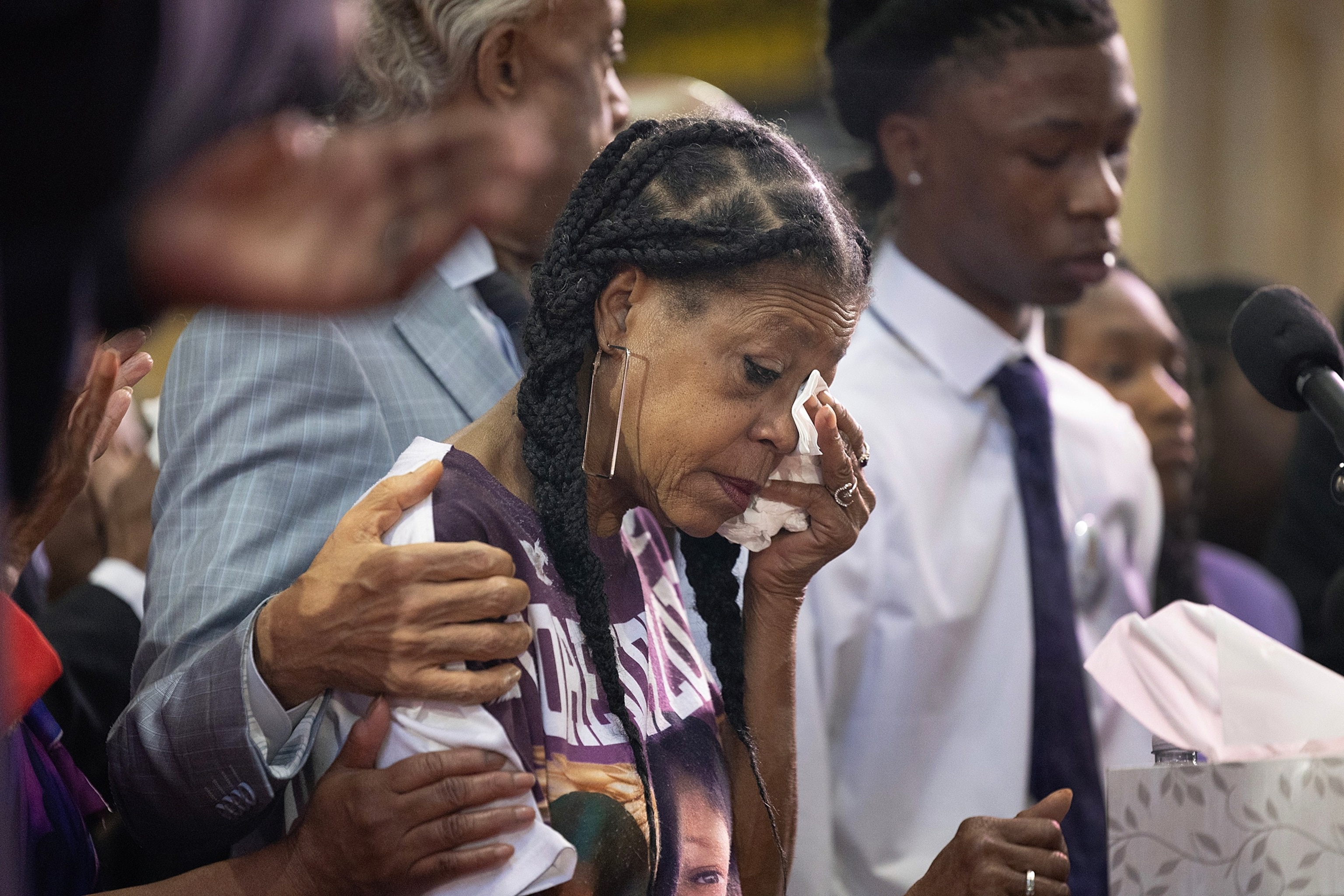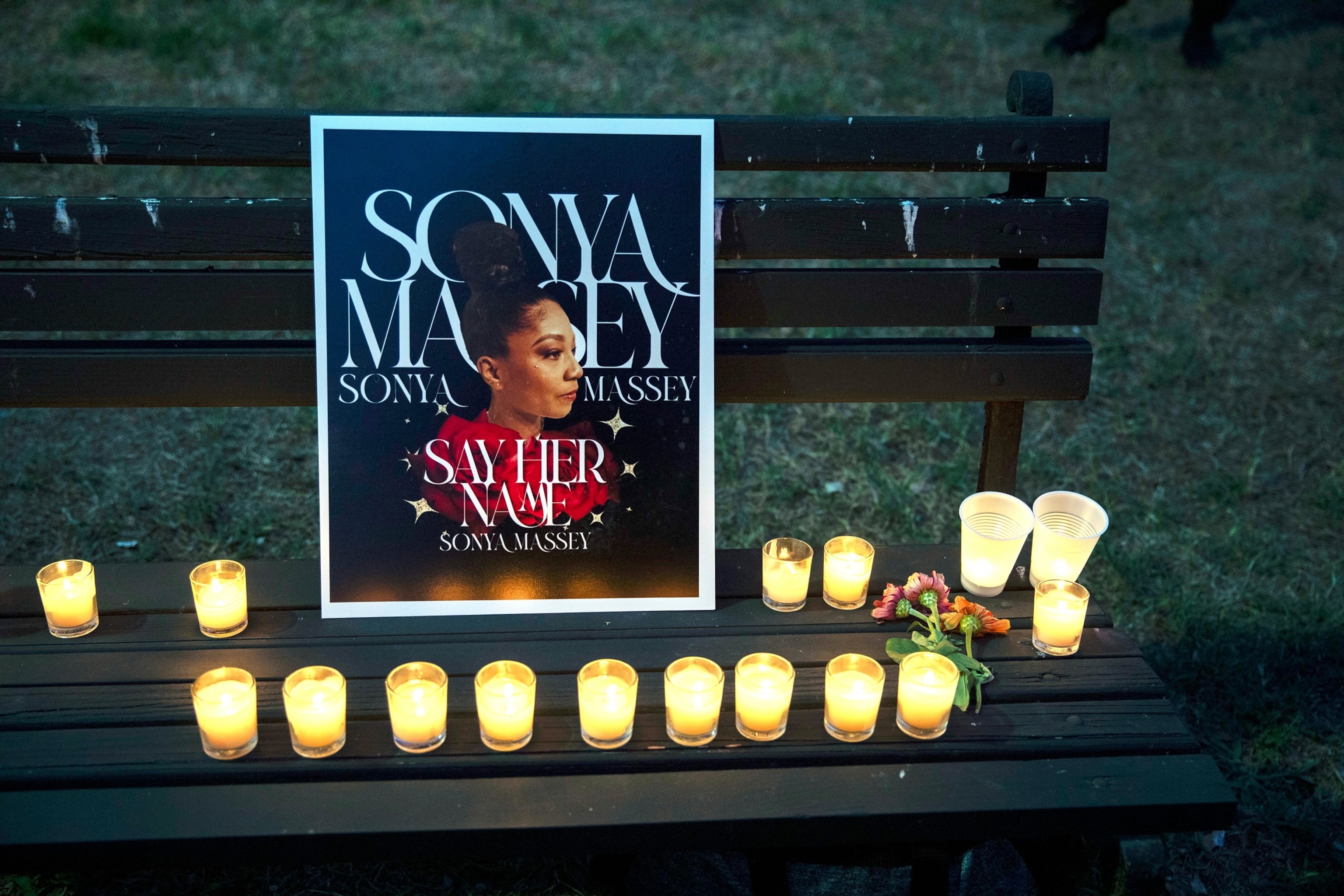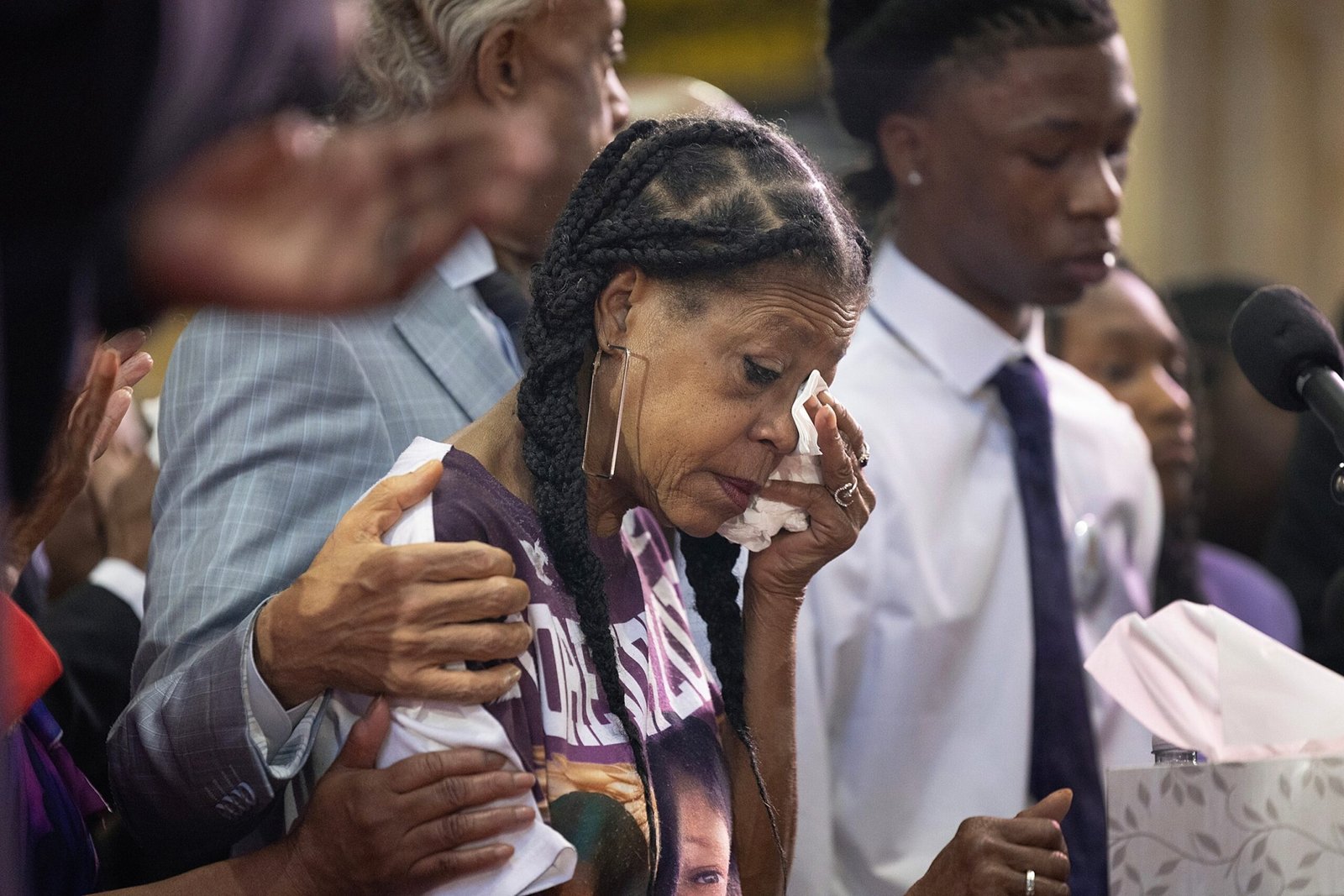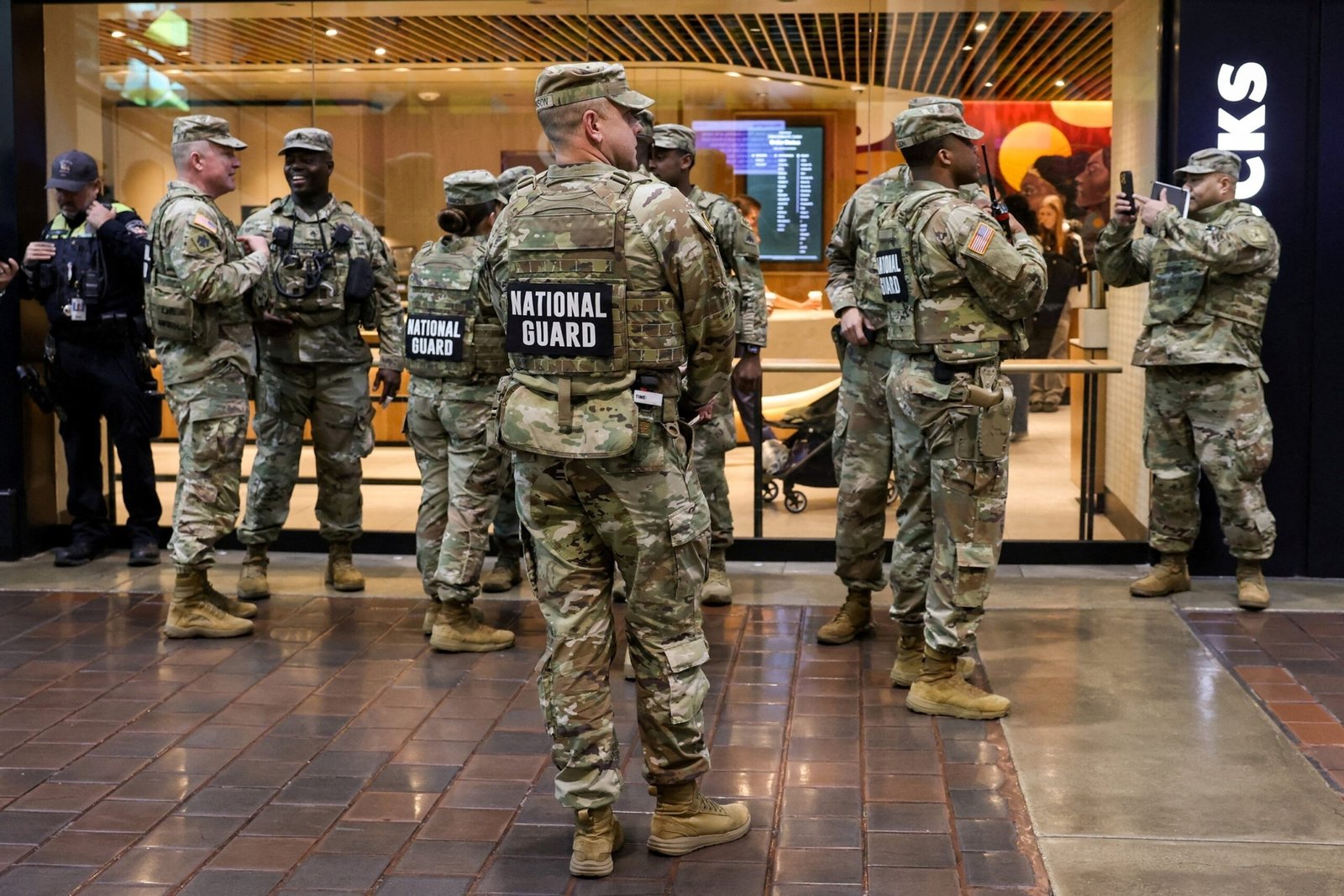A jury found a former Illinois sheriff’s deputy guilty of second-degree murder in the shooting death of Sonya Massey.
The trial began last week for Sean Grayson, a former Sangamon County deputy, in the July 2024 fatal shooting of Massey after she called 911 to report a possible intruder at her home in Springfield, Illinois.
Grayson had been charged with a total of three counts in connection with Massey’s death: first-degree murder, aggravated assault with a firearm and official misconduct. He pleaded not guilty to “all charges,” his attorney told ABC News.
After the seven-day trial, the jury was given the option of considering second-degree murder, according to ABC station WLS in Chicago. Grayson’s sentencing is set for Jan. 29, 2026. He could be sentenced to four to 20 years in prison or probation.
The jury was ordered not to deliberate on the lesser charges.
Ben Crump and Antonio Romanucci, attorneys for Massey’s family, said in a statement Wednesday that “the verdict remains a measure of justice for Sonya Massey.” They added: “Accountability has begun and we now look forward to the court imposing a meaningful sentence that reflects the seriousness of these crimes and the life that was lost. We will continue to fight for Sonya’s family and for reforms that protect everyone from the unlawful use of force.”
“When you threaten to shoot someone in the face, and you do it, that’s first-degree murder,” Sangamon County Assistant State’s Attorney Mary Beth Rodgers said during closing arguments Tuesday, according to ABC affiliate WICS in Springfield.

In this July 30, 2024, file photo, Donna Massey, the mother of shooting victim Sonya Massey, is comforted during a news conference at New Mount Pilgrim Church in Chicago.
Scott Olson/Getty Images, FILE
Rodgers said the biggest lie Grayson told was that he had no choice but to shoot Massey, according to WICS. The assistant state’s attorney said Grayson continued to lie over and over on the stand, even when he said he tried to turn on his body camera.
According to his partner’s body camera footage, Grayson, who was inside Massey’s home, points to a pot of boiling water on his stove and says, “We don’t need a fire while we’re here.”
Massey then poured the water into the sink and told the officer, “I rebuke you in the name of Jesus,” according to the video.
Grayson threatens to shoot him and Massey apologizes and crouches behind a counter, covering his face with what appears to be a red oven mitt, as the video shows. As he briefly stands up, Grayson shoots him three times in the face, the footage shows.

In this July 27, 2024, file photo, mourners place candles as they attend a vigil for Sonya Massey at Folger Park in Washington, DC.
Aashish Kiphayet/Nurphoto via Reuters, FILE
“He wants you to think he was scared,” Rodgers said of Grayson. “But you don’t have to believe that because it’s not true.”
The assistant state’s attorney said Massey’s last words before he was shot with his hands up were, “I’m sorry,” according to WICS.
Daniel Fultz, Grayson’s defense attorney, said during closing arguments that what happened to Massey was a tragedy but not a crime, according to WICS.
“As difficult as it is to hear and accept that, the outcome of this particular case was driven by the actions of Sonya Massey,” Fultz said, according to WICS.
The defense attorney claimed that when Massey said, “I rebuke you in the name of Jesus,” Grayson believed it was a threat, and the jury did not have to agree with the former deputy, but that’s what he believed, according to WICS.
Fultz said he didn’t care if the jury didn’t like Grayson as a person because that wasn’t what they should decide.
“What you can’t do is let your emotions dictate the outcome of this case,” the defense attorney told the jury, according to WICS.
In rebuttal, Sangamon County State’s Attorney John Milhiser referenced the defense’s instructions for the jury not to let their emotions decide the results of the trial, according to WICS.
“Hey, that’s what happened,” Milhiser said, according to WICS. “The defendant let his emotions dictate the outcome of what happened in Sonya Massey’s kitchen.”
Prosecutors played Grayson’s partner’s body camera footage of the shooting on a monitor, causing several of Massey’s relatives to cry or leave the courtroom, according to WICS. Grayson leaned over a table, not looking at the monitor. One juror appeared to cry as he watched the footage, holding a notebook in front of his face in an attempt to hide behind it, according to WICS.
“Here’s this giant, dangerous pot,” Milhiser said as he held up the cooking utensils for the jury to see, according to WICS.
Chief Circuit Judge Ryan Cadagin put the court on recess when he sent the jury to deliberate after closing arguments, according to WICS.
Fultz declined to comment to ABC News before the trial.
Footage released by Illinois State Police shows the incident from the partner’s point of view because Grayson did not turn on his own body camera until after the shooting, according to court documents reviewed by ABC News.
Grayson took the stand in his own defense Monday and told jurors that he thought Massey was threatening him the night he and his partner responded to him.
The former deputy said that after asking her to turn off the stove, on which a pot of boiling water was heating, he thought she was threatening him and was going to throw the water at him.
In the body camera video, Massey does not appear to lift the pot until Grayson raises his gun, a key distinction, according to prosecutors. He shoots and kills her moments later.
Grayson told the jury he didn’t use a Taser because he had an older model and Massey was wearing layers of clothing. The former deputy said he did not want to risk it malfunctioning.
Before Grayson took the stand, his partner, who went to Massey’s house with him, said on the stand that he did not see her as a threat before his partner fired his gun.
The trial began with jury selection on Monday, where a panel of 12 jurors was seated, according to WICS. The trial lasted more than five hours and ended with a jury consisting of nine white women, one black man and two white men, plus two white men and one white woman selected as alternate jurors.
The trial was moved from Sangamon County to Peoria County due to extensive media publicity.





